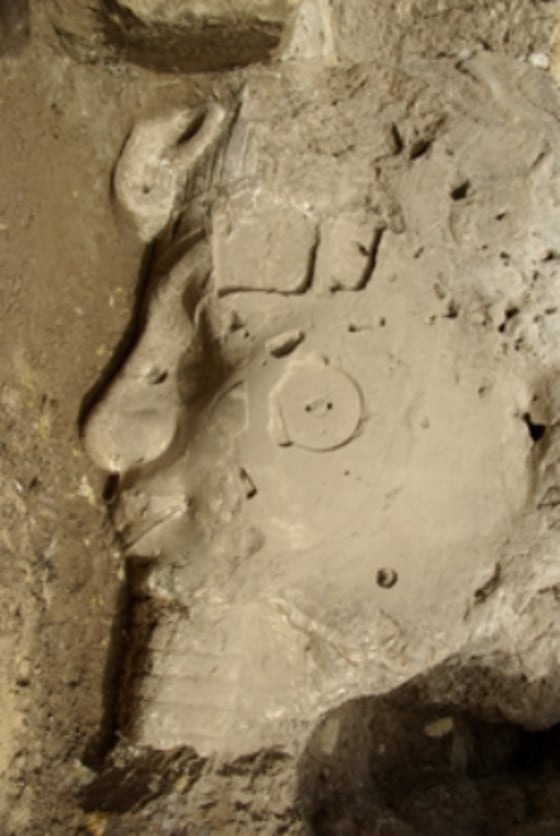An alabaster statue of the ancient Egyptian king Amenhotep III has been unearthed by a team of Egyptian and European archaeologists working at his funerary temple in the southern city of Luxor.
The 18th Dynasty king ruled from about 1390 to 1352 B.C., the height of a period known as the New Kingdom that is noted for its peace and artistic abundance. Amenhotep III was the grandfather of the famed boy-pharaoh Tutankhamun.
The statue shows Amenhoptep III seated, wearing a headdress, a pleated kilt and a royal beard, according to a news release posted today on the website of Zahi Hawass, Egypt's minister of state for antiquities.
Masterpiece of royal portraiture
Hawass described the statue's face as a masterpiece of royal portraiture. It has almond-shaped eyes outlined with cosmetic bands, a short nose and a large mouth with wide lips. The face is 4 feet (120 centimeters) tall.
The statue was found in the passageway leading to the third gate, or pylon, of the funerary temple at Kom el-Hettan, 660 feet (200 meters) behind the Colossi of Memnon, a second statue that guarded the first gate.
The statues likely stood an estimated 60 feet (20 meters) tall, according to Hourig Sourouzian, head of the mission of the Colossi of Memnon and Amenhotep III Temple Conservation Project.
She said the statue is unique because it was carved in alabaster, a stone hewn in the quarries of Hatnub in Middle Egypt that is rarely used for colossal statues. The pair at Kom el-Hettan are the only preserved examples of their size.
The statues likely collapsed during an ancient earthquake. The back of one of the two statues thrones was discovered in a previous excavation at the site. The remaining parts will be uncovered for conservation and restored in their original location.
Deity discovered
In addition to the giant statues, the mission has also discovered the head of a deity carved in granodiorite. The head is 11 inches high (28.5 centimeters high) and represents a male god wearing a striated wig. Part of his plaited divine beard is preserved under the chin.
The deity was found in the central part of the temple's great court, which has also yielded a red quartzite stele of Amenhotep III.
The stele was originally 30 feet (9 meters) tall. It is being reconstructed from 27 large pieces and several small ones up to about four-fifths of its original height.
The stone slab's round top will be put in place next season, the archaeologists report. That part of stele bears two scenes representing Amenhotep III and his queen consort, Tiye, bringing offerings to the gods, Amun Re and Sokar.
The rest of the stele is decorated with 25 lines of sunken hieroglyphic inscriptions, which list the temples Amenhotep III dedicated to the great gods of Thebes.
More stories from ancient Egypt:
- Enormous statue of powerful pharaoh unearthed
- Massive head of pharaoh unearthed in Egypt
- Two statues of ancient pharaoh found
- Egypt: Missing pieces of 3,400-year-old statue unearthed
John Roach is a contributing writer for msnbc.com. Connect with the Cosmic Log community by hitting the "like" button on the Cosmic Log Facebook page or following msnbc.com's science editor, Alan Boyle, on Twitter (@b0yle).
